Do you have a question about the Mercury 40 Jet and is the answer not in the manual?
Details process for transferring limited warranty to a subsequent owner.
Explains how to register product in US and Canada, including address changes.
Details warranty card process for buyers outside US and Canada.
Covers warranty for new products against defects in material and workmanship.
Warrants against rendering inoperative due to corrosion for three years.
Explains services not covered by warranty, including common misunderstandings.
Operator's responsibility for safe operation, safety of occupants, and public.
Read manual, understand handling differences between jet and propeller boats.
Warning about exceeding boat's maximum horsepower rating and its consequences.
Advice on operating high-speed boats and obtaining orientation.
Importance of self-locking nuts for steering link rod to prevent disengagement.
Function of lanyard stop switch to turn off engine when operator moves away.
Emergency stopping capability of jet drive units and associated risks.
How jet drive thrust affects steering and risks in tight turns.
Safety advice for people in water while cruising or boat is stationary.
Safety advice for passengers on pontoon and deck boats regarding seating and movement.
Hazards associated with jumping waves/wakes and potential for injury.
Safety precautions for hand-tilled outboards, including mounting and operation.
Alert about carbon monoxide poisoning and need for good ventilation.
Advice on selecting and installing accessories.
Recommendations for safe boating, including flotation devices, rules, and avoiding alcohol/drugs.
Importance of recording serial number for future reference.
Technical specifications for the 40 Jet 4-Stroke engine model.
Identifies various parts of the outboard engine with labels.
Instructions for trailering a boat with an outboard, including tilt support.
Safety warnings and instructions for transporting portable fuel tanks.
Guidelines on acceptable gasoline types, octane ratings, and leaded/unleaded fuels.
Safety warnings and procedures for filling fuel tanks, including tank placement.
Recommended oil types and viscosity for 4-stroke outboard engines.
Step-by-step guide for checking and adding engine oil, including contamination inspection.
Overview of Mercury/Quicksilver remote control features and functions.
Explains warning horn signals (continuous/intermittent beeps) and their meanings.
Monitors engine sensors to detect problems and protect the engine.
Details Mercury SmartCraft System for monitoring engine data and diagnostics.
Explains how power trim/tilt adjusts outboard position and its operation.
Steps for tilting the outboard using power trim or manual tilt.
Procedure for manually tilting the outboard if power trim is unavailable.
Using the auxiliary tilt switch to operate power trim.
Adjusting throttle grip friction for desired speed control on tiller models.
Adjusting steering friction (drag) on tiller handle models.
Adjusting steering friction (drag) on steering wheel for remote steering.
Function of shear key for protecting the jet drive impeller.
Comprehensive checklist for pre-starting the outboard and boat.
Precautions and procedures for operating the outboard in freezing conditions.
Procedures for flushing and protecting outboard after use in saltwater.
Advice for operating in shallow water to protect impeller and avoid damage.
Explanation of jet drive handling characteristics and operator adjustment.
Importance of tilting jet drive out of water when mooring in shallow areas.
Warning about rotating impeller and avoiding contact with water intake.
Steps to free a lodged impeller and potential hazards.
Initial pre-start check for engine oil level.
Recommended procedure for breaking in the engine during the first hours of operation.
Procedures for starting the engine using remote control.
Procedures for starting the engine using tiller handle controls.
Procedures for stopping the engine on remote control and tiller handle models.
Instructions for starting the engine using a spare starter rope.
Explanation of gear shift positions and procedures for remote/tiller models.
Importance of periodic inspections and maintenance for optimal condition and safety.
Recommendation to use genuine Mercury/Quicksilver parts and lubricants.
Information about the emission certification label on the engine.
Owner's duty to perform routine maintenance for emission standards.
Schedule of checks required before and after each use, and at intervals.
Procedure for flushing cooling system with fresh water after use in dirty water.
Steps for removing and reinstalling the top cowl of the outboard.
Advice on cleaning and waxing the outboard's exterior finish.
Periodic inspection of the battery to ensure starting capability.
Safety warnings and procedures for servicing the fuel system.
Inspecting fuel lines and primer bulb for signs of deterioration or damage.
Checking the fuel filter for water or sediment and filter replacement.
Importance of using specific bolts and self-locking nuts for steering link rod.
Function and inspection of corrosion control anodes to prevent galvanic corrosion.
Procedure for inspecting, gapping, and replacing spark plugs.
Correcting tendency of the outboard to pull towards starboard.
Symptoms and effects of a worn or dull impeller on engine performance.
Adjusting impeller clearance to the liner for optimal performance.
Procedure for replacing blown fuses and identifying their locations.
Conditions requiring replacement of the timing belt.
Locations and procedures for lubricating outboard components with specific lubricants.
Procedures to protect outboard from rust, corrosion, and freezing during storage.
Lubricating components and touching up paint for external protection.
Steps to protect internal engine parts with oil or storage seal.
Procedure to pump extra grease into jet drive bearing to purge moisture.
Storing the outboard in an upright position to allow water drainage.
Instructions for storing the battery, including checking water level and recharging.
Lists possible causes for the starter motor not cranking the engine.
Lists possible causes for the engine failing to start.
Lists possible causes for the engine running erratically.
Lists possible causes for the engine exceeding its normal RPM range.
Lists possible causes for a general loss of engine performance.
Lists possible causes for the battery failing to hold its charge.
Recommends returning outboard to authorized dealer for factory-trained service.
How to contact nearest dealer or Mercury Marine Service Office when away from home.
Directs inquiries for parts and accessories to the authorized dealer.
Steps to follow for resolving problems with dealer or Mercury Marine.
General information regarding outboard installation.
Warning about exceeding boat's maximum horsepower rating.
Warning and explanation of neutral-start protection devices.
Advice on selecting and installing accessories.
Fuel pressure considerations for electric fuel pumps.
Guidance on using the lifting eye for outboard installation.
How to set initial outboard mounting height, referencing water testing.
Procedure for determining mounting height for V-bottom hulls.
Procedure for determining mounting height for flat-bottom hulls.
Method to determine transom strength and adequacy for outboard mounting.
Steps for drilling mounting holes and fastening the outboard to the transom.
Lubrication instructions for the steering cable end.
Importance of using specific hardware and locknuts for steering link rod.
Adjusting trim-in stop by repositioning tilt stop pins.
General guidance on water testing procedures and checks.
Fastening remote fuel hose with hose clamps.
Installing remote wiring harness and access cover.
Installing throttle cables into the remote control unit.
Procedures for installing and adjusting the shift cable.
| Cylinders | 3 |
|---|---|
| Starting | Electric |
| Steering | Remote |
| Shaft Length | 20 in |
| Horsepower | 40 HP |
| Alternator Output | 226-watt |
| Warranty | 3 years |

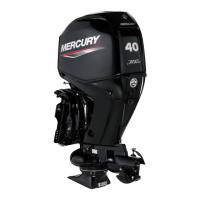
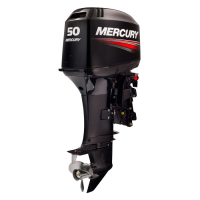
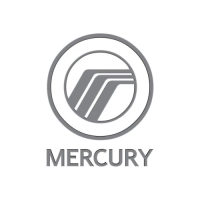

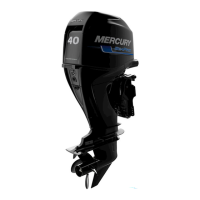

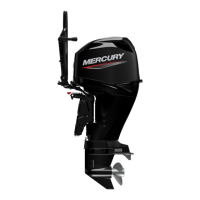

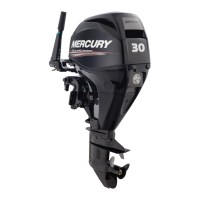

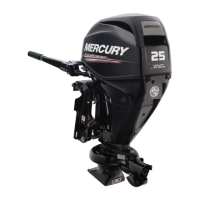
